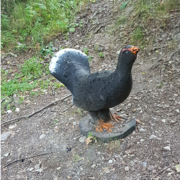01 The badger
Identification :
Of the aspect of a small bear heavy and short on legs, the badger or tasson in French-speaking Switzerland (from the Italian tasso) is the biggest of our mustelids (up to nearly 15 kg). The male is slightly larger than the female. Its coat is greyish on its back, flanks and tail, while its belly and legs are black. Its elongated head is white with two black stripes running from eyes to ears.
Habitat :
The badger occupies all kinds of habitats, from cultivated countryside to forests, from large city parks to rhododendron mountain moorland. However, its dens are usually in woodlands, where they are better protected from disturbance.
Some dens have the appearance of real dormitory towns, with numerous rooms, galleries several dozen metres long and numerous openings.
Breakdown :
The badger is widely distributed in the Rhone Valley. Its population appears to be increasing everywhere. It is abundant in regions where corn is widely cultivated, such as the Chablais. It is less common in areas of low-growing vineyards and orchards. The gardens of our villages are regularly visited, and damage to vegetable gardens or lawns in search of grubs is difficult to tolerate. Even though it becomes rarer at higher altitudes, it climbs to the upper limit of the forests.
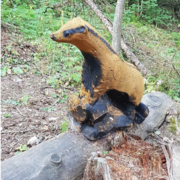
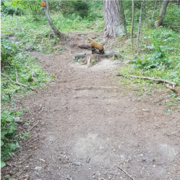
02 The lynx
Identification :
The color and the speckle of the lynx vary quite a bit from one individual to another and according to the seasons. The fur becomes thicker and generally lighter in winter. Other characteristics: its pointed ears, terminated by a brush of black hair, its favourites, its retractile claws rarely visible on ground prints, and its short black-tipped tail. Much more than smell, sight and hearing are particularly well developed in this predator. Its small heart size does not allow it to chase its prey for long
Habitat :
The lynx is an essentially forest animal, which generally does not stray very far from the edges. In its wooded habitat, this felid appreciates rocky walls or steep, rocky slopes as a daytime refuge. These present no difficulty for this excellent climber who is able to climb the steep ridges without apparent fatigue or to cover several dozen kilometres in the mountains in one night. Avoiding humans in principle, the lynx has been seen resting in isolated and temporarily unoccupied alpine chalets, haylofts or mazots.
Breakdown :
The lynx disappeared from Switzerland, as in most Western European countries, during the 18th (Jura, Plateau) and 19th centuries (Alps). From 1971 to 1976, 16 lynxes (9 males and 7 females) from Czechoslovakia were officially reintroduced into the Jura and the Alps. This does not include some clandestine releases in the National Park and possibly in Valais. In 2000, the population in the Valais Alps was estimated at only about 15 adult individuals. This is probably due to illegal shooting, as prey remains abundant.
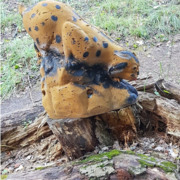
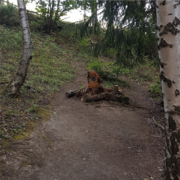
03 The chamois
Identification :
The chamois is a species of mammal of the family Bovidae and the subfamily Caprinae. It measures 110 to 130 cm long, 70 to 80 cm at the withers and weighs between 30 and 60 kg. It has horns of about 27 cm for the male. Chamois have a maximum weight in autumn, when they have accumulated reserves during the summer. At the end of winter, their weight may be halved and in early spring they exhaust their reserves. Hunters distinguish forest chamois from rock chamois. The forest chamois, the most typical, is larger, stockier and more stocky than the others. The rock chamois, like the Vanoise chamois, has a more slender silhouette.
Habitat :
The chamois lives only in the mountains, sometimes up to 3500 m in summer (Alps, Pyrenees, above 100 m in the Vosges). It frequents the mountain pastures above the tree line, in the scree area. In winter, it descends in the forest or on slopes where the snow is blown away by the wind. The usual area of its home range is mainly between 800 and 2300 m. The lower limit of its presence can be locally around 400 m. Its home range varies according to region, sex and age. It ranges from one to several hundred hectares. Most young males are vagrants between 3 and 5 years old.
Breakdown :
The chamois lives in rocky areas, forests and pastures in the Alps, the Vosges, the Jura, the Apennines, the Carpathians and Asia Minor. The Pyrenean chamois is called Isard, it is smaller and redder than the Alpine chamois.
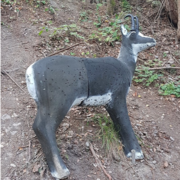
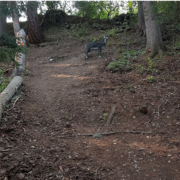
04 The wild boar
Identification :
The wild boar is a massive and powerful ungulate, whose head is very large compared to a stocky body and short on legs. The males are equipped with lower canines coming out laterally from the mouth as tusks and can reach up to 150 kg in our country. The females (suckers) are slightly smaller. The muzzle ends with a bumper used to dig into the ground.
Habitat :
The wild boar prefers mixed or deciduous forests dominated by beech, oak or chestnut. It also inhabits swampy forests and muddy reedbeds where it can wallow before resting on a drier mound, which sometimes serves as a refuge for its nest. In cultivated areas, it is particularly fond of cornfields, which provide it with shelter and almost unlimited food. In all these habitats, oval wet holes often appear in which wild boars come to take their protective mud baths (parasites).
Breakdown :
The wild boar was virtually eradicated from Switzerland at the beginning of the 20th century, only occasionally appearing as an immigrant herd from Germany or France. Since the 1970s, it has been reestablishing itself with the large-scale cultivation of maize. Its return to the Rhone Valley dates back to the 1930s, from Savoy. The wild boar is still in full expansion, favoured by the strong expansion of corn cultivation in the Rhone Valley since 1990. At present, it is growing at a rate of 60 to 90 per year in the Valais.
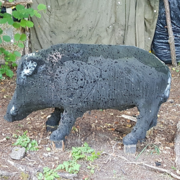

05 The ibex
Identification :
The ibex is a distant cousin of the goat with which it can crossbreed. It exceeds it however in size and power. This sturdy ungulate is adapted to the mountains with its powerful legs and wide hooves that can spread and whose thick padding plays a non-slip and cushioning role. Its thick coat is brownish-beige, darker in winter. Females (decks) are smaller, lighter and have much shorter horns than males (billy goats), in which they can reach one metre and weigh up to 5 kg. The livery of the goats is an even lighter beige.
Habitat :
The ibex typically inhabits the high mountains, with a preference for open, spaced lawns, rock faces and scree slopes. However, they move to lower altitudes in winter and sometimes take refuge almost at the bottom of valleys, in open woodland or on the edge of forests. The south-facing slopes, which are cleared of snow more quickly, are then sought after, as the ibex is less at ease on snow than the chamois.
Breakdown :
The ibex had virtually disappeared from Europe by the early 19th century. In the Rhone valley, the last ibexes were reported in 1862 in the Arolla region. To this day, this ungulate colonises most of the high mountain ranges in our region, up to an altitude of 3500 m. In Valais, the estimated numbers of ibexes based on precise annual counts reach 3500 to 400 individuals.

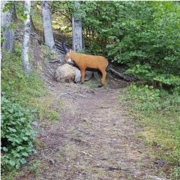
06 The wolverine
Identification :
Here is the guest of honor of the course. Since its passage in Nax, the wolverine has apparently felt good there and did not want to leave. More seriously, the wolverine is an omnivorous, but to a greater extent carnivorous, mammal species of the mustelidae family. It looks like a small bear (10 to 15 kg) with a hairy tail. Its fur is dense and does not retain water, allowing it to withstand the extreme cold of its habitat. He measures 75 to 110 cm. He has a round, broad head, small eyes and short, rounded ears. In Canada, it is described as the "fiercest animal in the Far North", it can be very dangerous.
Habitat :
The wolverine frequents the large coniferous forest (taiga) and the tundra. Depending on the abundance and distribution of its prey, its range may be even larger, usually to follow migrating caribou herds. Within its range, it generally prefers remote areas, away from humans. It usually shelters under a stump, in a bush or even inside an animal carcass. Sometimes it lies in circles in the snow under a tree. Caves also make perfect shelters for gluttons. It does not defend its territory, but signals its presence by depositing the musky secretions of its anal glands on the ground or on a tree trunk along the paths it frequents.
Breakdown :
A significant portion of the wolverine's natural habitat has been destroyed or fragmented due to urban development, farming and forestry activities. Hunting, trapping, and the use of poisoned wolf bait have also contributed to the decline in wolverine populations. The scarcity of the wolverine could also be explained by the decline in the grey wolf population. The carcasses of animals killed by grey wolves are an important source of food for them. The wolverine is endangered throughout eastern Canada.
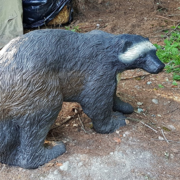
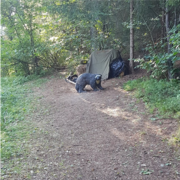
07 The wolf
Identification :
The wolf is the largest wild canid and reaches in our latitudes about the size of a German Shepherd dog. In Europe, it has a greyish greyish coat shaded with red with, in general, a white patch between the muzzle and the cheeks and a black line on the forelegs. The ears are rounded, set further apart and shorter than the dog's ears. The eyes are yellow. Southern European wolves are smaller and lighter than northern wolves.
Habitat :
While it prefers wooded and undisturbed areas for refuge, this canine occupies all kinds of habitats, from large cultivated plains to dense mountain forests, arid regions or the icy expanses of the far north. It often seeks out forested mountains, which it regularly leaves at night to hunt in agricultural areas.
Breakdown :
Exterminated from much of Europe in the 19th century, the wolf survived mainly in Mediterranean countries. Currently, there are less than 10,000 wolves in Europe. After forming breeding packs in the southern French Alps in the early 1990s, two individuals were recorded in Val Ferret in July 1995. Probably coming via Valle d'Aosta, they killed many sheep and were apparently shot in the spring of 1996. Since then, damage to livestock has occurred on a regular basis, followed by legalized or not legalized shooting, including one individual in 2000 at Hérémence-Evolène.
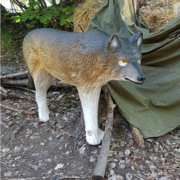
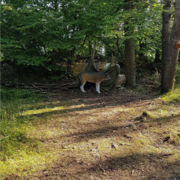
08 The groundhog
Identification :
A large rodent, the marmot is easily recognizable by its stocky appearance. Its front legs have four clawed toes, compared to five on its hind legs. The young have a uniform, dark coat. The adult's coloration differs slightly: the flanks and belly are lighter, contrasting with the dark back. Light patches are typically visible on the cheeks and nose, especially in older individuals.
Habitat :
Topography and slope exposure play an important role in habitat selection. Living in grasslands dotted with rocks and boulders, marmots normally live above the tree line in open areas where they can dig tunnels to build their burrows.
Breakdown :
Particularly frequent between 1600 and 2200 m of altitude, the marmot is for this reason less widespread in the Pre-Alps than in the Valais Alps. It can be found from the mountain level up to about 3000 m (top of Saint-Martin) and sometimes more. Let us note that in tourist areas marmots get used to the presence of man little by little.
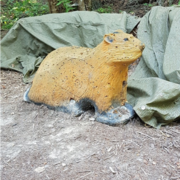
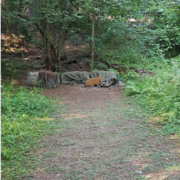
09 The red fox
Identification :
The red fox is a medium sized canid, whose characters are well known: pointed snout, triangular and black ears at the back, red coat and long bushy tail, usually white at the tip. Some darker individuals are called sable foxes.
Habitat :
This carnivore, well adapted to human activities, inhabits all kinds of environments: forests, agricultural areas, the outskirts of towns, and even the heart of the most important ones, where it takes advantage of the smallest green spaces to dig its burrow (parks, road and railway embankments, cemeteries and roundabouts). It can even exploit unoccupied buildings and make its shelter in the hay of a hayloft or isolated hayloft, in an abandoned cellar, in a buried pipe.
Breakdown :
The red fox is common in our region as well as almost everywhere in Switzerland, up to an altitude of about 2500 m. Its reappearance remains underestimated in the Upper Valais. It is also found in towns (Vevey, Sion, Brig), in ski resorts, as well as in alpine lawns up to 3000 m altitude. In the canton of Vaud, as in Valais, between 1300 and 2300 foxes have been shot every year since 1990.
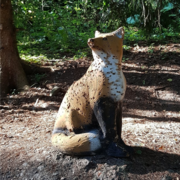

10 The owl
Identification :
The owl can be distinguished from owls by its head surmounted by two feathered egrets, which we would take for ears. This giant of the night, measuring more than 1 m 60 wingspan and weighing 2 to 4 kg, does not start its day until after dusk, and disappears as soon as the sun shows the tip of its nose. The owl is an unusually discreet animal. The structure of their feathers allows them to fly without the slightest crumpling of their wings. The first few months of the year are the best time to observe owls. In January, males and females call each other from a distance by whispering their desire, then mate by hooting. In February and March, the first broods of owls appear.
Habitat :
The "cloë", as it is called in patois, nested in the walls along the plain where it found a rich range of prey: hedgehogs, hares, partridges in the vast meadows, ducks, fish and frogs in the still extensive marshes, bartavelles at the foot of the hills. But the remains of black grouse and ptarmigan, found in the Saillon area, prove that the dukes went up to the Grand-Garde, 1500 m higher, to exploit the upper edge of the forests. Since 1986, the situation seems to be improving: nesting has been proved in nine localities, while various clues (feathers, songs, more and more corpses) suggest the presence of other still secret places...
Breakdown :
The current distribution reflects the distribution of prey: a mountain population mainly exploits voles, grouse and hares from the upper forest edges, while at low altitudes a few pairs hunt ducks and rallids from the lowland marshes.

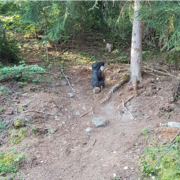
11 The deer
Identification :
The deer's massive, powerful and high legged body is developed for running in open country. From reddish-brown to yellowish, the summer coat changes to grey-brown and becomes denser and longer in winter. A whitish patch called a mirror highlights the buttocks. Fawns are spotted white until August. Males develop a mane on the neck in autumn and, in winter, they wear antlers whose size and number of antlers or horns tend to increase with age. Their antlers fall off in March and finish forming again in June. In July, the male gets rid of the dry velvet around them by rubbing his antlers against the young trees (spawning).
Habitat :
The deer's native habitat appears to be open to semi-open environments, such as open forests interspersed with grasslands. In most of the Swiss plains it was hunted by man and had to take refuge in the more densely wooded mountainous regions. In the bad season, the deer leave the snow-covered slopes to migrate to the sunny areas and return to the forests and high bushes as soon as the good season returns. Low bets can occur up to more than 200 m altitude (Nendaz).
Breakdown :
The deer had completely disappeared from the Rhone valley probably as early as the 18th century. Since its reintroduction on 29th April 1926 in the Entremont valley and in Aletsch in 1934, it has built up large populations in these two regions. As early as the 1960s, it was reintroduced by the hunting service in all the valleys of the southern Rhône where it has become well established everywhere.
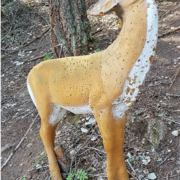
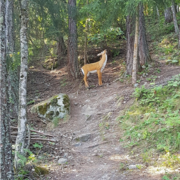
12 The grouse
Identification :
The grouse or heather cockerel is the most secret bird of our mountains and probably the most emblematic. Even its song is covered by that of the finch. Its horny snowshoes around its fingers allow it to progress better on the snow. The plumage of the male is very different from that of the hen because brooding on the ground requires a more discreet behaviour. The rooster crowing tries to make the hens lay on its territory.
Habitat :
The grouse lives in Europe in coniferous mountain forests dotted with deciduous trees with an undergrowth rich in berry and blueberry shrubs. It spends all winter in the forest and feeds in the summer months on the edge of the subalpine. It can stay connected for several days on a fir tree, feeding only on the needles.
Breakdown :
Europe: Cantabrian Cordillera, Pyrenees (where it is still hunted), Cevennes, Alps (very rare in France), Jura, Vosges, Black Forest, Switzerland, Germany, Poland and Eastern Europe (mountain range), Scandinavia, Baltic countries, introduced in Scotland (from 1837).
Asia Large part of Russia (Urals), as far as the Yenissei River, northern Kazakhstan and north-western Mongolia.
